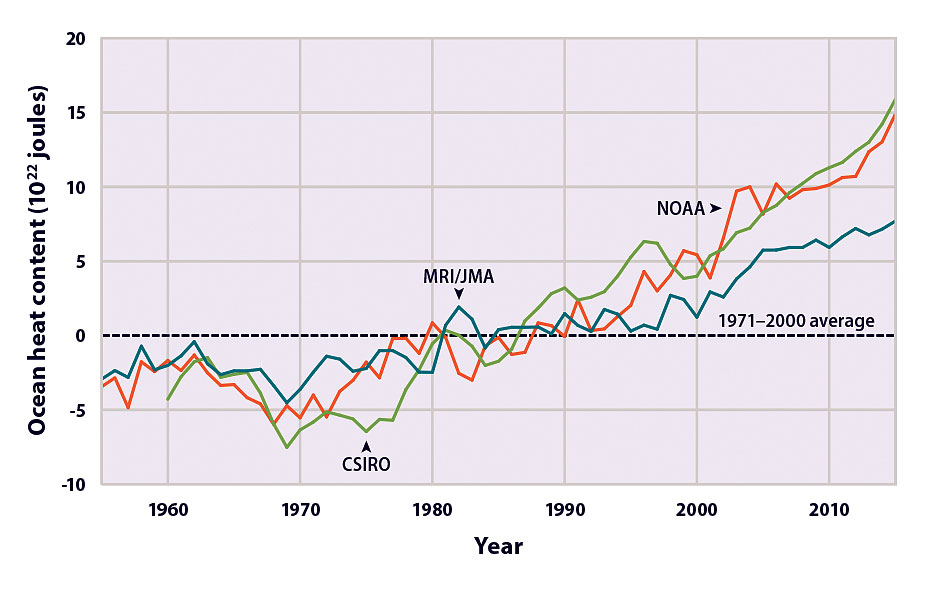Weather and climate. Data and models. Theory, fact, hypothesis, consensus? It’s easy to feel uneasy. It’s easy to get confused.
What is ocean warming, where does it fit into the realm of climate science, and what’s the lobster industry to do?
Perhaps the best way to start making sense of rapid climate change is to think time and space.
Weather’s time is brief; its space local. Weather is the here and now. Weather predictions forecast short periods of time into the future.
Climate’s time, on the other hand, spans tens, hundreds, thousands, hundreds-of-thousands of years. Climate’s space is regional and global.
 Weather predictions nowadays are based on relatively data-rich computer generated models. Although not perfect, numerical weather models are pretty darned good, have revolutionized the ability to forecast local weather, and have become increasingly accurate over the past six or seven decades.
Weather predictions nowadays are based on relatively data-rich computer generated models. Although not perfect, numerical weather models are pretty darned good, have revolutionized the ability to forecast local weather, and have become increasingly accurate over the past six or seven decades.
Climate change models have also matured and increased in accuracy, mostly due to the amazing advances and innovations scientists have come up with to study climate history.
Climate scientists rely on hard data from temperature records, radioactive dating of carbon and oxygen isotope ratios in fossil shells of ancient sea creatures forming layers of earth’s history, and from drilling into Greenland ice to get core samples filled with air bubbles trapped for hundreds to thousands of years.
The collection and analysis of these data allows us to flip through climate history like pages in a book that contains a time line of warm periods and glaciation.
When we do this we see that CO2 concentrations are lowest during the coldest, and highest during the hottest, periods of time.
Those who have read and truly understand how the story goes know that the concentration of CO2 in the atmosphere and ocean has increased rapidly since the start of the industrial revolution and that there is no question that burning fossil fuels is the major contributor to increased atmospheric CO2 concentrations and ocean acidification.
There is also no question that CO2 is a greenhouse gas that heats up the atmosphere. Fortunately for terrestrial life, the ocean absorbs CO2 and 90% of excess heat from the atmosphere is stored in the ocean.
Unfortunately for marine life, increased CO2 causes ocean acidification and increased temperature vexes cold-water species like the American lobster, Homarus americanus.
So, what does all this mean to the lobster fishery?
Well, back to that part about…

To get these complete stories and much more, you’ll need to purchase the MARCH 2018 issue of Commercial Fisheries News.
Please choose from the following options:
• BUY a Single PRINT edition of CFN that is delivered by MAIL. PRINT EDITION
• Quickly enjoy ONLINE access with our Hi-DEF flip-book. PURCHASE THIS ONLINE EDITION
• Shop the Online ARCHIVE
(Read online flip-book immediately with purchased access key and download a copy for yourself to keep. Not sure if it works for you? Try a FREE SAMPLE HERE.)
• SAVE BIG when you SUBSCRIBE!







